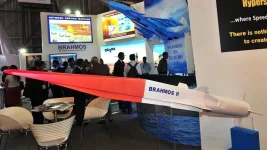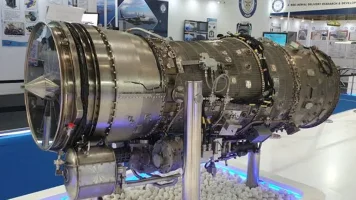- Views: 2K
- Replies: 8
Following its landmark acquisition of the BrahMos supersonic cruise missile, the Philippines is now exploring a new defence partnership with India, showing keen interest in acquiring advanced Next-Generation Offshore Patrol Vessels (NGOPVs) for the Philippine Coast Guard (PCG).
Reports indicate that the proposal goes beyond a simple purchase, with discussions focused on establishing local manufacturing and maintenance facilities in the Philippines, marking a significant step in the deepening maritime and defence cooperation between the two nations.
The NGOPVs under consideration are modern, multi-purpose warships designed for a wide range of maritime operations.
In India, these vessels are being constructed by several leading public sector shipyards. Goa Shipyard Limited (GSL) and Garden Reach Shipbuilders and Engineers (GRSE) are building a total of eleven vessels for the Indian Navy, while Mazagon Dock Shipbuilders Limited (MDL) is constructing six for the Indian Coast Guard.
The Philippines' interest stems from the proven quality and cost-effectiveness of Indian defence hardware, which could provide a crucial upgrade to its maritime security apparatus, particularly in the contested waters of the West Philippine Sea.
For the Philippines, the acquisition of these vessels would be a strategic enhancement of its coastal defence capabilities.
The NGOPVs are designed for long-duration patrols, with an impressive range of 5,000 nautical miles, allowing them to operate for weeks without needing to refuel. This endurance is ideal for monitoring the country's vast Exclusive Economic Zone (EEZ).
The proposed 113-meter vessel would likely become the flagship of the PCG fleet, equipped with advanced weaponry such as a 76mm Oto Melara main gun, AK-630 close-in weapon systems for defence against missiles, and the Indian-made Kavach decoy launching system to counter threats.
These features make the vessel highly capable for missions ranging from surveillance and anti-piracy to search and rescue operations.
A key aspect of the proposal is the emphasis on local industry participation. Manila is reportedly interested in establishing domestic capabilities for the vessel's manufacturing, potentially starting with maintenance, repair, and overhaul (MRO) training.
This collaborative approach would foster technology transfer, generate skilled employment, and help develop the Philippines' domestic shipbuilding industry, reducing its long-term reliance on foreign suppliers for its defence needs.
India's domestic NGOPV program is progressing rapidly, showcasing the country's growing shipbuilding prowess under its 'Aatmanirbhar Bharat' (Self-Reliant India) policy.
A significant milestone for the Indian Navy's program was the keel-laying ceremony for two vessels at a GSL partner facility on March 23, 2025. Similarly, the first NGOPV for the Indian Coast Guard, part of a ₹1,614 crore contract, had its keel laid at MDL's Mumbai yard on July 22, 2025.
These vessels, measuring approximately 117 meters and displacing around 3,000 tons, are equipped with state-of-the-art systems, including AI-based maintenance software, multipurpose drones, and facilities to operate helicopters.
This potential naval deal builds on the foundation of the $375 million BrahMos missile agreement signed in 2022, which made the Philippines the first international customer for the advanced missile system.
Bilateral ties were further strengthened by the visit of three Indian Navy warships to Manila in August 2025, which included high-level discussions on expanding defence cooperation.
The possible acquisition of Indian-made patrol vessels highlights a growing strategic alignment between New Delhi and Manila, focused on promoting a secure and stable Indo-Pacific region.






